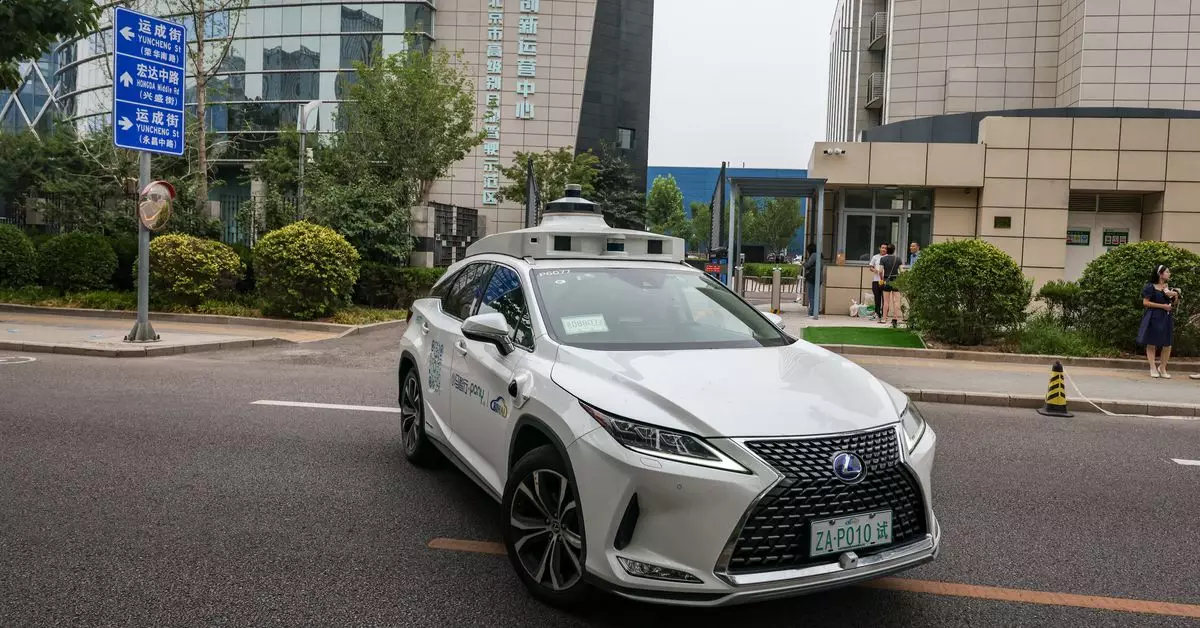The rapid advancement of autonomous vehicle (AV) technology is reshaping the transportation landscape, and the competition between the United States and China is intensifying. As the race heats up, contrasting strategies and progress between the two countries’ automotive industries reveal much about their respective approaches to innovation, regulation, and market dynamics.
One of the most significant developments in the realm of autonomous vehicles comes from China, where Pony.ai has announced an ambitious plan to expand its fleet dramatically. The company’s collaboration with GAC Aion, a major Chinese automaker, will see its fleet grow from approximately 250 to at least 1,000 vehicles by 2025. This strategic move places Pony.ai in a strong position to serve first-tier cities like Beijing, Shanghai, and Guangzhou, which are rapidly becoming playgrounds for autonomous technology.
Pony.ai’s current performance, with an average of 15 rides per vehicle per day, highlights the demand for AV services in urban areas. With over 26,000 weekly trips, the company can capitalize on China’s ample supply of cost-effective electric vehicles (EVs) coupled with favorable regulatory conditions. Chinese authorities have shown significant support for the advancement of self-driving technology, allowing companies to innovate with fewer restrictions than in the United States.
In stark contrast, the landscape in the United States appears far more uncertain. Recent decisions from major players like General Motors, which is ceasing funding for its robotaxi venture Cruise, reflect a growing sense of caution among automakers regarding fully autonomous vehicle projects. Similarly, Ford’s withdrawal from the Argo AI project underscores this hesitance, prompting a strategic pivot towards advanced driver-assist systems for conventional vehicles.
This shift occurs amidst rising fears concerning China’s burgeoning dominance in AV technology. With the Biden administration proposing regulations to limit imports of vehicle software from China, the concern is not solely commercial but also rooted in national security. Such protective measures, including tariffs specifically aimed at Chinese EVs and batteries, could inadvertently stifle innovation within the US, hampering the progress of domestic AV developments.
Despite Pony.ai’s aggressive growth plans, the financial landscape for all autonomous vehicle operators remains precarious. The company, which recently made its initial public offering on Nasdaq at a valuation significantly lower than its previous worth, exemplifies the broader trend within the industry—none of the major AV players have yet turned a profit. The costs associated with development, technology, and fleet management are burdensome, and most initiatives are being pursued cautiously to avoid overextension in a volatile market.
The implications of China’s approach—characterized by a strong governmental push and an abundant supply of inexpensive EVs—could prove advantageous in the long run. As American companies grapple with regulatory barriers and market uncertainties, they risk falling further behind.
While China races ahead, the US struggles with internal policy challenges that have delayed the formation of a cohesive strategy for AVs. Negotiations within Congress have remained stagnant for more than six years, with various factions disputing key issues such as the regulation of AV deployment and liability concerns. The failure to establish a federal framework jeopardizes the potential for widespread deployment of self-driving technology and could hinder the development of innovative solutions in urban mobility.
Local opposition also poses obstacles to growth. Cities like San Francisco have voiced their concerns about the integration of AVs, including issues like blocked traffic and disruptions to emergency services. As residents express mixed feelings toward the emerging technology, officials must navigate public sentiment while striving for technological advancement.
As the race for autonomous vehicle supremacy continues, it is essential to recognize the differing trajectories of the US and China. China’s state-supported march towards enhanced AV capabilities contrasts sharply with the US’s regulatory complexities and fluctuating industry support. While concerns of national security and economic competition loom large in American policymaking, it remains to be seen whether these factors will galvanize decisive action or invite further stagnation. Ultimately, the future of autonomous mobility hinges on the balance between innovation, regulation, and public acceptance in both nations. The question of whether the US can reclaim its competitive edge over China in this burgeoning field is yet to be answered.

